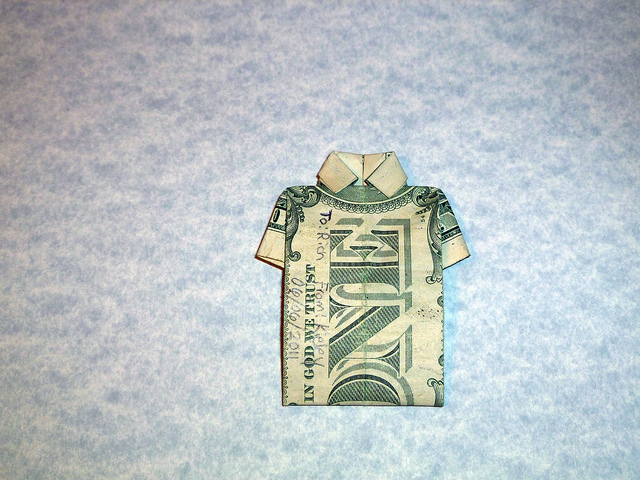In 1801, Eli Whitney went before the US Congress with 10 working muskets. He proceeded to disassemble each of them, mix and scramble all the parts, then reassemble 10 working muskets. Prior to that day, most things were custommade by craftsmen using hand tools. Then, in a flash of geological time, the idea of interchangeable parts was released to the world -- it would be impossible to put the idea back in its cage. Extraordinary innovation followed in the industrial revolution.
In the murky world of crypto-currencies, the financial instruments of tomorrow may not necessarily be assembled like they are today. The new applications of decentralized currency are modeled more like “energy” flows rather than individual units of account. Energy exists in many forms, such as electrical, chemical, thermodynamic, kinetic and nuclear, but its objective is always the same: to move something in the physical world -- to create change. The value of crypto-currency is proportional to the magnitude of change it can induce.
A generalized theory is emerging to define and specify decentralized applications (DApps). This makes them easier to identify, measure and replicate. If ignored, these innovations have the potential to be extremely disruptive to the insurance industry. If adapted, they can greatly increase the efficiency, variety, precision and granularity for insurance products of tomorrow.
Not unlike at the dawn of the industrial revolution, there has been an extraordinary level of innovation in crypto-currencies since the inception of Bitcoin. The objective of these efforts is to move something in computational space such as flipping a switch, verifying a data set, securing identity, establishing order, establishing ownership or verifying capacity. This may seem somewhat obscure until you realize that these “energies” can convert and combine in immeasurable combinations to form autonomous logic circuits -- i.e. complex contracts.
Because all businesses are based on contracts that act upon some physical space, it is only a matter of time before crypto-contracts jump to the physical space, as well. As David Johnson, CEO of DApps Fund (a venture capital firm for decentralized innovation), says; “Everything that can be decentralized will be decentralized.” Eli Whitney was said to have uttered similar sentiments.
Early DApps are little computational engines that operate autonomously and whose output is determined by an algorithm. The resulting decisions are binary and final. There are three characteristics that an application must have to be classified as a DApp. As you read these conditions, note how different they are from a traditional corporate structure.
- The application must be completely open-source. It must operate autonomously, with no entity controlling the majority of its tokens. And its data and records of operation must be cryptographically stored in a public, decentralized block chain.
- The application must generate tokens according to a standard algorithm or set of criteria. These tokens must be necessary for the use of the application, and any contribution from users should be rewarded by payment in the application’s tokens.
- The application may adapt its protocol in response to proposed improvements and market feedback, but all changes must be decided by a majority of its users.
Next, there are three classes of decentralized applications that align loosely to a familiar computer analogy:
- A Type I DApp is analogous to a computer operating system such as Windows or the Mac OS X.
- A Type II DApp is analogous to a general-purpose software program such as Word, Excel or iPhoto.
- A Type III DApp is analogous to a specialized software solution like a mail merge, an expense macro or a blogging platform.
As such, we can expect that there will be fewest Type I DApps, more Type II DApps and even more Type III DApps.
The more direct definition of these three classes is:
- Type I decentralized applications has its own block chain. Bitcoin is the most famous example of a Type I decentralized application, but there are others.
- Type II decentralized applications use the block chain of a Type I decentralized application. Type II decentralized applications are protocols and have tokens that are necessary for their function.
- Type III decentralized applications use the protocol of a Type II decentralized application. For example: A hypothetical cloud protocol that uses a Type II DApp to issue "cloudcoins" that can be used to buy cloud computing services would be an example of a type III decentralized application.
Taken together, we have most, if not all, of the familiar components of governance and interdependencies without the layers of management that are associated with traditional corporations. As you absorb the analogy and definitions, consider how DApps can be nested, combined and integrated with other DApps to emulate complex contracts.
One particularly interesting DApp that recently launched is called
Counterparty. Counterparty is a Type II DApp that performs one single task extremely well.
Counterparty is a betting platform; or we can put it politely and call it an escrow platform. Two parties may enter into an agreement about the outcome of a future event such as a horse race or football game. Each player puts his or her money into an escrow account that is sealed prior to the race. After the results are registered, the DApp autonomously transfers the money from the combined account to the winner.
Now imagine 500 bettors putting their money into the escrow account before the contract event. Upon completion of the event, the money is automatically assigned by algorithm to the winners in pre-assigned proportions. It does not take too much imagination to see this as an insurance product, except without agents, executives, managers, office towers or cute little geckos.
Soon, marathon runners can pool health insurance more toward sprains and falls, and less toward heart disease. Mini-van moms can pool auto insurance for number of passengers rather than miles driven. Professionals can pool E&O insurance by peer review. In fact, any affinity group can accurately price the perils that they are also most capable to manage. DApps are massively scalable; one application can serve infinite users.
The market size of binary betting (sports, insurance, coin toss, etc.) combined with complex betting (contracts for difference, hedging, options, etc.) is in the trillions of dollars. So while Counterparty has only one use case, the use case is massive. Now imagine 100,000 DApps operating autonomously, combining and integrating into complex relationships -- not unlike building a jigsaw puzzle.
There was once a time when craftsmen guilds were the most powerful organization in the republic. Many of us remember the days when labor was increasingly replaced by machinery. The time may be arriving where machinery can also replace management. The insurance industry must become familiar with this environment and have the wherewithal to reorganize itself, before someone else does it for them.
***
Come Join us at
The Future of Money and Technology Summit in San Francisco today, Dec. 2, 2014, for my panel discussion on Fueling the Decentralization Movement.
Speakers:
Paige Peterson -
Maidsafe
Sam Onat Yilmaz -
Dapps Fund
Joel Dietz -
Swarm.co
Christian Peel -
Ethereum
Moderator: Dan Robles,
The Ingenesist Project







